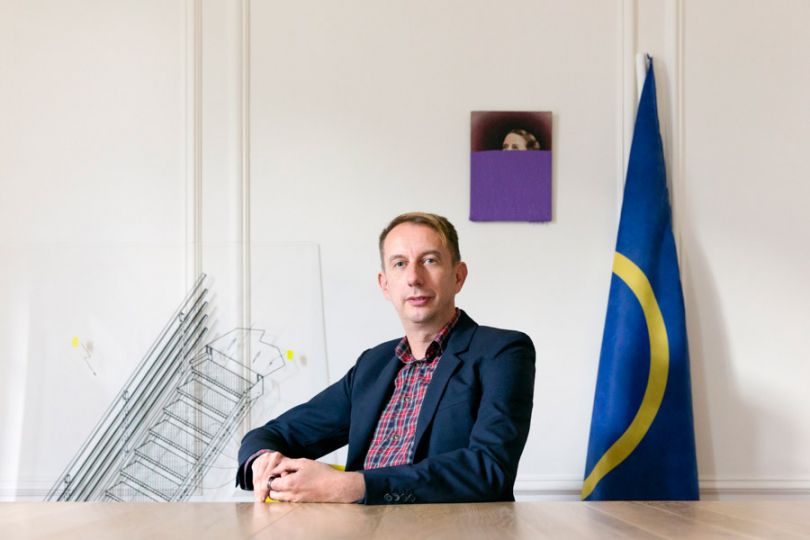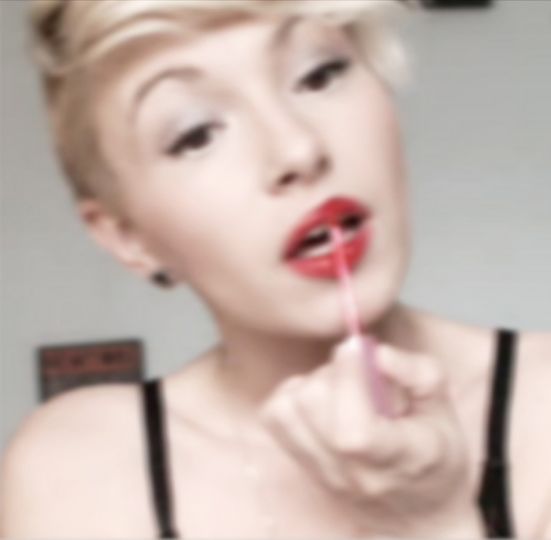“Bypassing expectations to foster an egalitarian, forward-looking system of art.”
What was your first esthetic and/or photographic shock?
I fell in love with medieval Roman art when I was studying art history. My childhood dream was to become an antique book dealer on the banks of Seine so that I could collect books or illustrations and resell them.
I experienced my “contemporary art shock” in Barcelona, in front of Paul McCarty’s installation Pinocchio Pipenose Household Dilemma with traces of ketchup, Nutella, and mayo on wood, a video of McCarty smearing these condiments all over the place, and an unmade bed in a corner, in the back of the room. I later read up on the context of that installation and discovered McCarty’s triumphal gesture as he posed next to his Twingo disguised as Pinocchio. On my visits to contemporary art museums and foundations in Barcelona, such as MACBA, I subsequently discovered Clifford Still’s paintings, which I often reference in conversations with my artists.
How do you assess your experience since you moved to Belleville in 2013, which was a major challenge after having managed an important Italian gallery?
First of all, it was the appeal of the new, and I enjoyed a much more affordable lease than in other areas of Paris. But that’s not all: Belleville remains today a fertile ground for experimentation in an art capital, which was another asset, along with a margin of flexibility to experiment with what I hope to bring to the Parisian scene.
How has the profession of gallery owner evolved, how does that affect you, and how have you anticipated this profound change?
I am aware of it and look forward to it, accepting the fact that this profession changes from one month to the next!
Even if the gallery operates like a classic micro-enterprise, the world of art is increasingly opening up to new realities, such as artists who carry out their work without any gallery or artists who themselves create their own spaces. Gradually, art fairs are starting to invite these new types of platforms. Art is no longer uniquely a relationship involving museums/galleries/artists/magazines. The idea of networking is ubiquitous, which proves that this profession is a true intellectual occupation where one must keep up with the times and anticipate in order to encourage artists to work at different levels.
You have a strong presence at art fairs: what is your strategy in that regard?
We pay close attention to art fairs which open up new paths. In the first years of activity, we emphasized the correlation between quality and price, as in ARCOMadrid which facilitates access to international institutions and private collections despite the fact that Spain has been undergoing a period of crisis. A lot of new doors were opened to us, at minimum cost. It’s a question of trusting your feelings. We often choose a fair where the focus is on the project. We have participated in an online fair (Dream Hong Kong), we will be going to Rome (Granpalazzo), then to Art-O-Rama in Marseille, then to a new art fair called Code in Copenhagen. Lastly, we’ll make a full circle with Paris Internationale in the fall.
We essentially work in the contexts we deem to be favorable for the artists.
What is the rationale for launching Paris Internationale in an already crowded landscape, and how do you envision this second edition following the fair’s success last year?
The landscape certainly is crowded, but not for the network we are currently trying to build. There is a very curious gap between the way people see Paris from outside and the actual awareness of the Parisian public. We realized there was a lack of trade press in France. I’m hoping that the new version of the Code magazine (Code South Way) is going to be the manifesto of this new trend.
My colleagues and I (the Crèvecoeur, Sultana, High Art, and Gregor Staiger galleries) are planning to adhere to the same philosophy for the second edition of Paris Internationale as we did for the first. Each of the five founding galleries puts forward proposals that are then exhaustively discussed, and we reach a consensus through debate and open vote. We volunteer by paying our own participation fees, as any other gallery, which again promotes a level playing field. If we want to foster a dialog among gallery owners and ensure they work in the best conditions possible, that is to say at an equal level, we must go and see them, call on them, take interest in what they do. In turn, they follow our work. The experimental aspect of our approach in Belleville and our travel throughout the year open up new perspectives for the public. In short, we envision this second edition of Paris Internationale to be in the same vein and of the same quality as the first. We’re doing it for Paris.




















